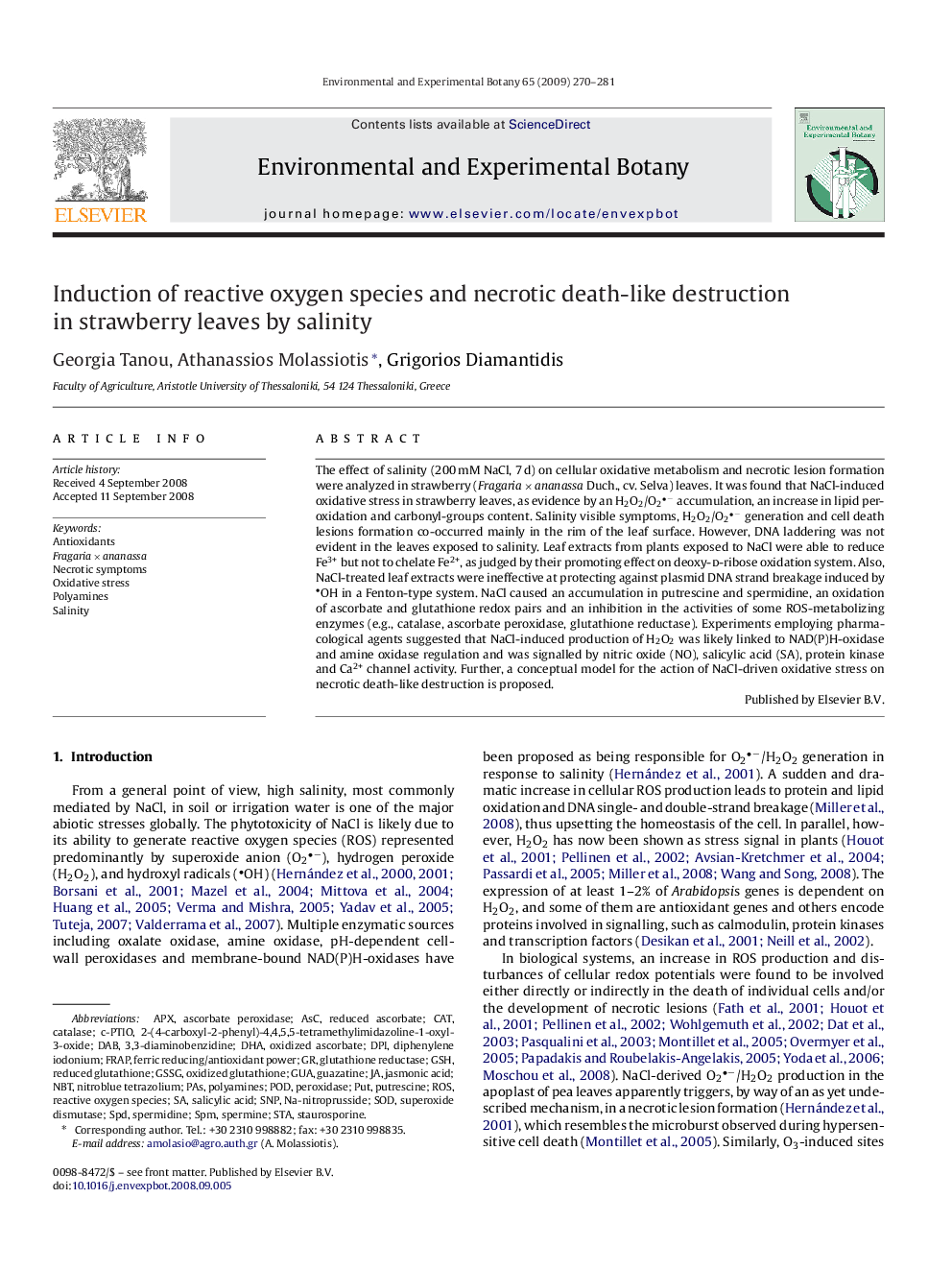| Article ID | Journal | Published Year | Pages | File Type |
|---|---|---|---|---|
| 4555226 | Environmental and Experimental Botany | 2009 | 12 Pages |
The effect of salinity (200 mM NaCl, 7 d) on cellular oxidative metabolism and necrotic lesion formation were analyzed in strawberry (Fragaria × ananassa Duch., cv. Selva) leaves. It was found that NaCl-induced oxidative stress in strawberry leaves, as evidence by an H2O2/O2− accumulation, an increase in lipid peroxidation and carbonyl-groups content. Salinity visible symptoms, H2O2/O2− generation and cell death lesions formation co-occurred mainly in the rim of the leaf surface. However, DNA laddering was not evident in the leaves exposed to salinity. Leaf extracts from plants exposed to NaCl were able to reduce Fe3+ but not to chelate Fe2+, as judged by their promoting effect on deoxy-d-ribose oxidation system. Also, NaCl-treated leaf extracts were ineffective at protecting against plasmid DNA strand breakage induced by OH in a Fenton-type system. NaCl caused an accumulation in putrescine and spermidine, an oxidation of ascorbate and glutathione redox pairs and an inhibition in the activities of some ROS-metabolizing enzymes (e.g., catalase, ascorbate peroxidase, glutathione reductase). Experiments employing pharmacological agents suggested that NaCl-induced production of H2O2 was likely linked to NAD(P)H-oxidase and amine oxidase regulation and was signalled by nitric oxide (NO), salicylic acid (SA), protein kinase and Ca2+ channel activity. Further, a conceptual model for the action of NaCl-driven oxidative stress on necrotic death-like destruction is proposed.
